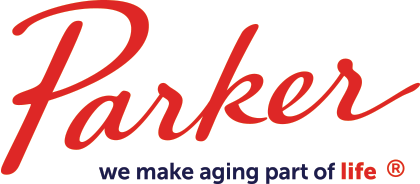Shared Mission and Vision
- Many companies, whether private equity or non-profit, share a common goal of serving older people and creating better ways of addressing their needs and desires.
- As a not-for-profit organization, Parker exists to fulfill our mission of serving people while exercising good stewardship to support a sound enterprise for many years to come.
Governance
- No one owns a non-profit organization in the way that shareholders own a for-profit corporation.
- Parker is overseen by a board of trustees whose members volunteer their time and talents to ensure quality services and management. With no expectation of financial gain, our board members are committed to making sure we remain true to our mission, respond to local needs, plan effectively for the future and manage financial resources effectively.
- Parker recruits board members with expertise in a wide range of disciplines that relate to our mission. The expertise of our board members helps keep our organization abreast of community needs and expectations, trends in health care and disciplined business practices.
- Parker manages our financial resources in accordance with our mission. Like many non-profit providers of aging services, Parker was founded by people with a rich tradition of not-for-profit service to others. Those long-standing values were incorporated into our organization from the start and are reflected in our governance and management today.
Mission Driven
As a not-for-profit, Parker is committed to our mission of providing transformative and charitable long-term care services in home-like settings while advancing learning opportunities for nurses, other healthcare professionals and caregivers. As a chartered not-for-profit provider of senior services, Parker has a direct obligation to our community-at-large and our residents and participants.
Quality
Not-for-profit providers of aging services offer a commitment to quality that stems from a mission of service and a history of compassion.
A major study of nursing home quality in the U.S. and Canada found that not-for-profits consistently delivered better outcomes in four key areas relating to quality: more or higher quality of staffing, lower prevalence of pressure ulcers, lower prevalence of restraints, and fewer government citations for deficiencies.
Growth
Growth for not-for-profit organizations is the ability to extend our services to meet the needs of the community while staying true to our mission and remaining financially sound.
Many not-for-profit aging services organizations in the U.S., including Parker, have been operating for more than 50 years and have been the breeding grounds for improvement and change in the field.
Stability
At the heart of high-quality long-term care is creation of lasting relationships. Parker has been serving local communities for decades with stability that gives both residents and their loved ones lasting peace of mind.
Ongoing Improvement
As a not-for-profit, Parker is committed to innovation and continuous quality improvement, with a goal of improving the entire field of aging services. We tailor housing, health care and community services to address unmet needs within our communities.
Not-for-profit organizations have been at the forefront of improving services for older persons, pioneering the introduction of new options such as “small home” long-term living communities. Not-for-profits also have been driving important reforms, including reductions in the use of restraints and psychotropic drugs in nursing centers.
Profits
Not-for-profits cannot operate for profit or distribute corporate income to shareholders, but must reinvest returns in ways that support our mission. Revenues exceeding expenditures may be used to improve the physical environment of our communities; serve more people; offer more and better accommodations and services; recruit and retain staff; and fulfill our mission of creating better options for aging.
Parker’s main focus is not to create profit, but to create better options for the people we serve. Our residents and clients know we are setting high standards for quality today and are focused on constant improvement for the future. Parker’s true bottom line is quality care and resident satisfaction.
Raising Equity
As a not-for-profit, Parker cannot raise equity through investors. However, we can raise money through charitable donations. Charitable gifts to not-for-profits are deductible to the donor.
Commitment to Staffing and Staff
As part of our not-for-profit mission, Parker recognizes that staff satisfaction and commitment are related to sufficient numbers of staff, fair wages and benefits, work flexibility when needed, continuing education/growth opportunities and an environment of respect.
The Continuum of Care
Like many not-for-profits, Parker offers multiple ways for older persons to find a satisfying living arrangement or the care they need, whether home-based or in living arrangements ranging from assisted living to 24-hour skilled nursing. This continuum of services allows people to access the services they need in the place they call home.
Person-Directed Care
The latest evolution in senior services revolves around respecting the needs and desires of the individual, rather than fitting the individual to traditional patterns of the facility. Parker, as well as many not-for-profit providers, are at the forefront of this change.
In conclusion, this information is provided for general context when presenting the not-for-profit difference in aging services. Parker recognizes that there are many quality providers of care and services, and we salute them in their missions of service to meet the needs of senior adults.
Resource: Communicating the Not-For-Profit Difference in Aging Services, October 2015, LeadingAge

